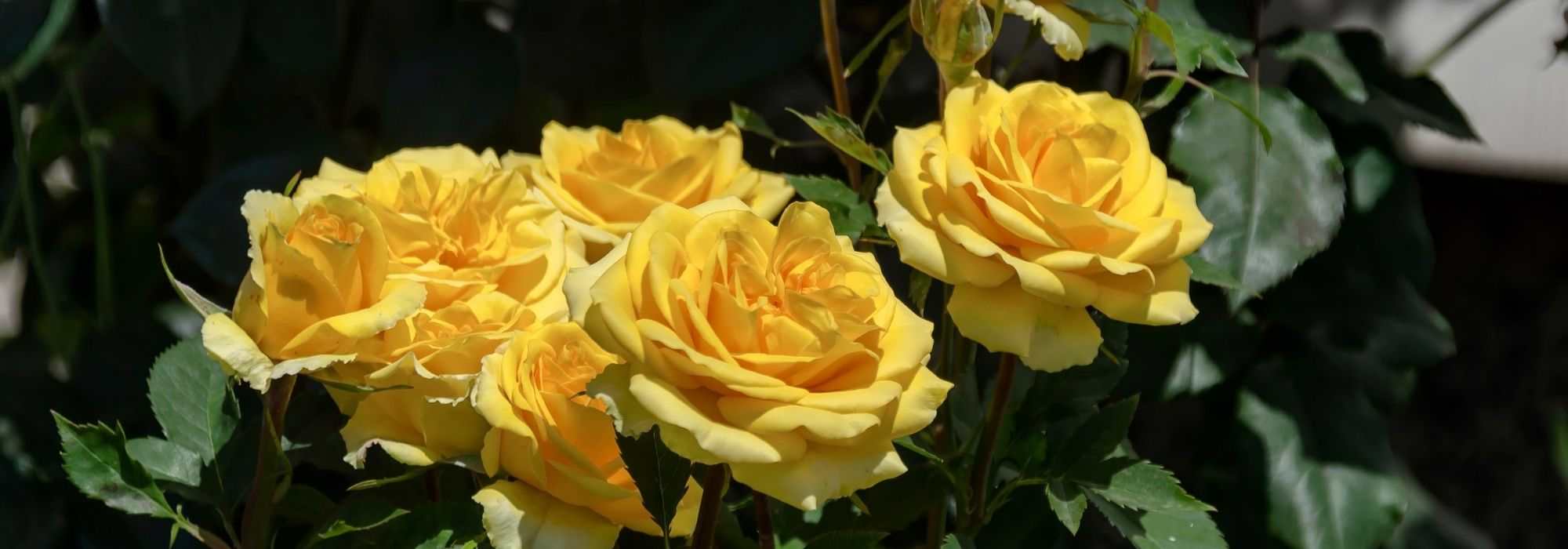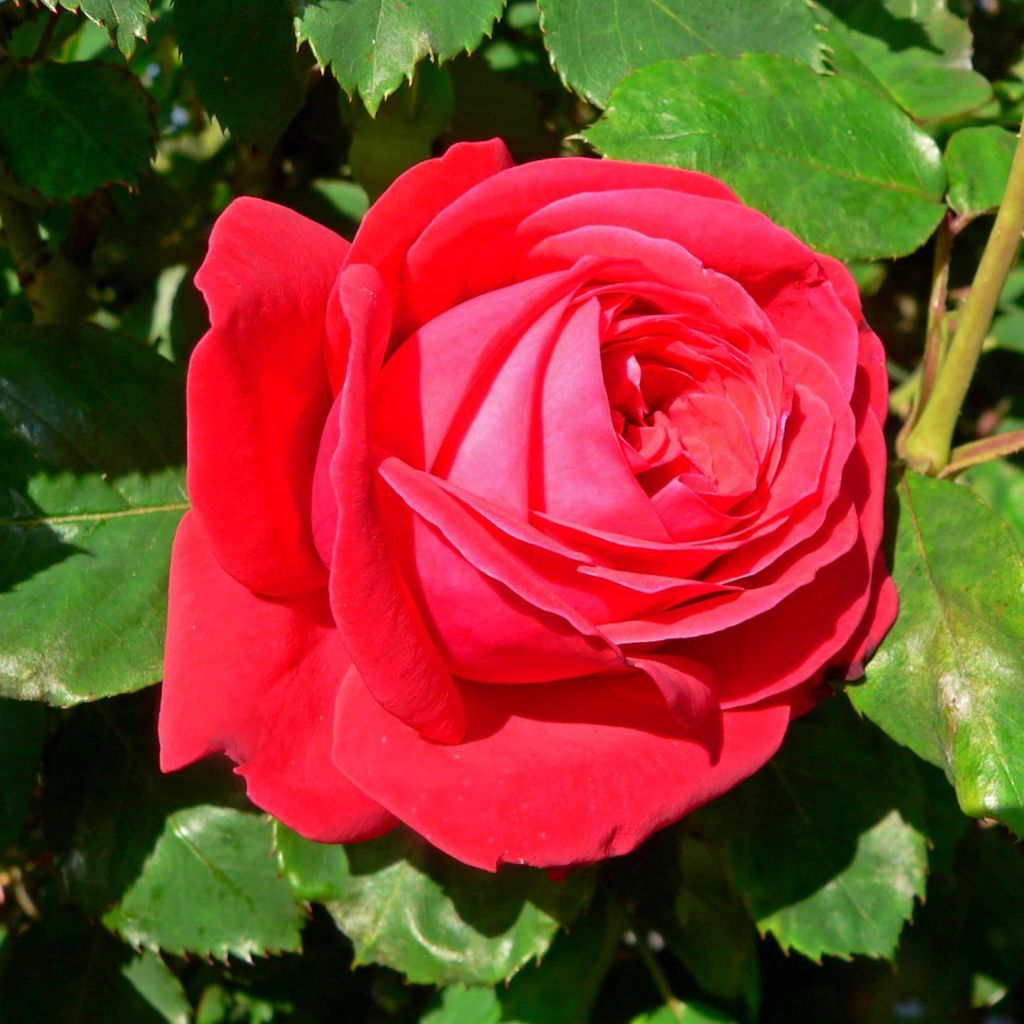

Rosa 'Dame de Coeur'
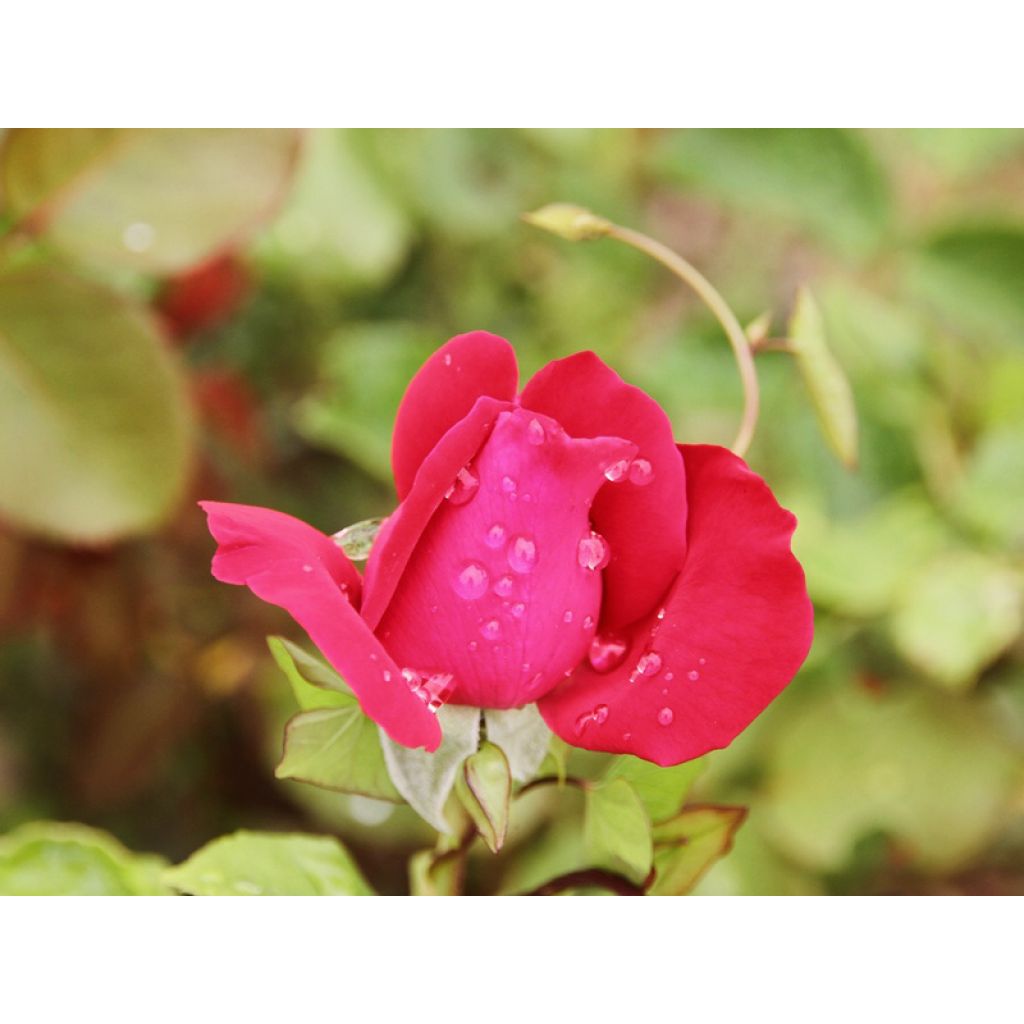

Rosa 'Dame de Coeur'


Rosa 'Dame de Coeur'
View more pictures
Hide images

Elise A.

Elise A. • 51 FR
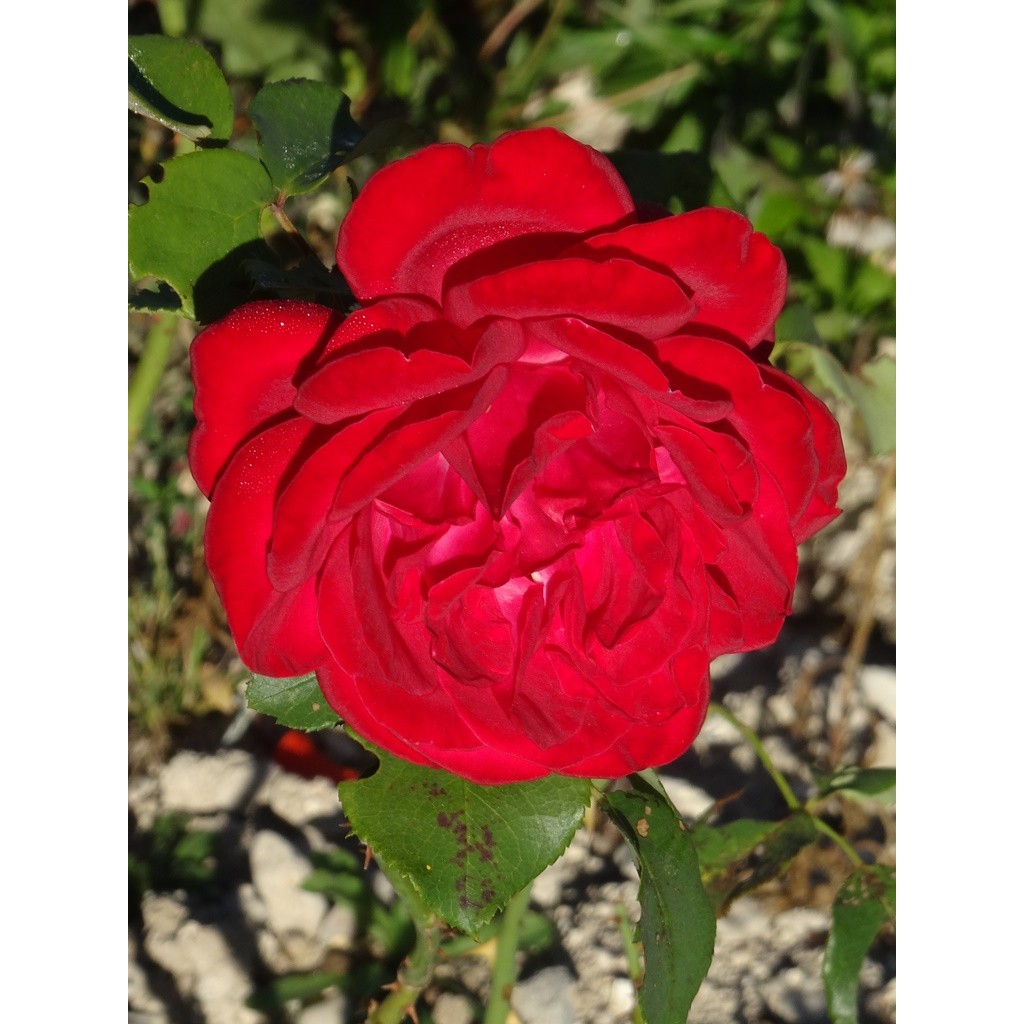
Elise A.

A sturdy, long-lasting rose.
Elise A. • 51 FR
Rosa 'Dame de Coeur'
Rosa Dame de Coeur
Rose bush with beautiful naked roots but the upper branches are a bit dry. However, I have no doubt that it will recover very well in the spring.
Chantal, 27/11/2022
Special offer!
Receive a €20 voucher for any order over €90 (excluding delivery costs, credit notes, and plastic-free options)!
1- Add your favorite plants to your cart.
2- Once you have reached €90, confirm your order (you can even choose the delivery date!).
3- As soon as your order is shipped, you will receive an email containing your voucher code, valid for 3 months (90 days).
Your voucher is unique and can only be used once, for any order with a minimum value of €20, excluding delivery costs.
Can be combined with other current offers, non-divisible and non-refundable.
Home or relay delivery (depending on size and destination)
Schedule delivery date,
and select date in basket
We guarantee the quality of our plants for a full growing cycle, and will replace at our expense any plant that fails to recover under normal climatic and planting conditions.
Description
The 'Dame de Coeur' Rose, created in 1958, remains one of the most planted varieties in gardens, as it delights gardeners with its endless and pleasantly scented flowering, with a bright cherry red colour even under the summer sun. This vigorous hybrid tea rose forms an upright bush adorned with elegant dark green, shiny foliage. Its flowers are large, double, full, perfectly shaped, and abundantly produced from June until the first frost. Their fragrance is appreciated in bouquets, but also in the garden, in large rose beds. This variety is easy to grow for pleasure!
The 'Dame de Coeur' Rose, registered by Belgian rose breeder Louis Lens in 1958, belongs to the hybrid tea roses. It forms a small bush with a slightly upright, somewhat stiff, vigorous and fast-growing habit. It will reach a height of about 90 cm (35in) to 1 m (3ft) with a spread of 80 cm (32in). From May-June until late in the season, on dark green and shiny foliage, beautiful modern roses measuring 15 to 16 cm wide bloom, solitary, carried by long, sturdy stems. These roses of a bright red colour are perfectly uniform. Their fragrance, moderately pronounced, is described as floral. The foliage is fairly resistant to diseases.
This modern 'Dame de Coeur' rose, with its always elegant and trendy appearance and its beautiful floribundance, will find its place in the garden in a large rose bed or as a solitary plant in a well-maintained garden. This rose plant adapts to all climates and soils that are not too dry. It pairs perfectly with pretty and easy-to-grow perennials, such as geraniums, Campanula lactiflora or rapunculoides, snapdragons, foxgloves. Its flowers are perfect for creating very chic bouquets.
Rosa 'Dame de Coeur' in pictures
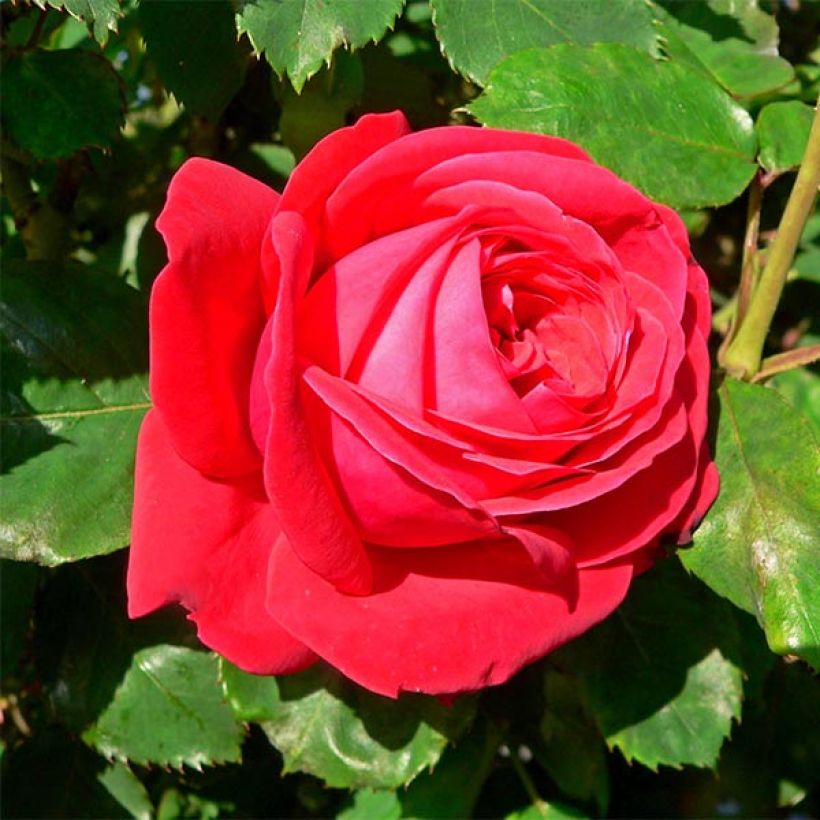

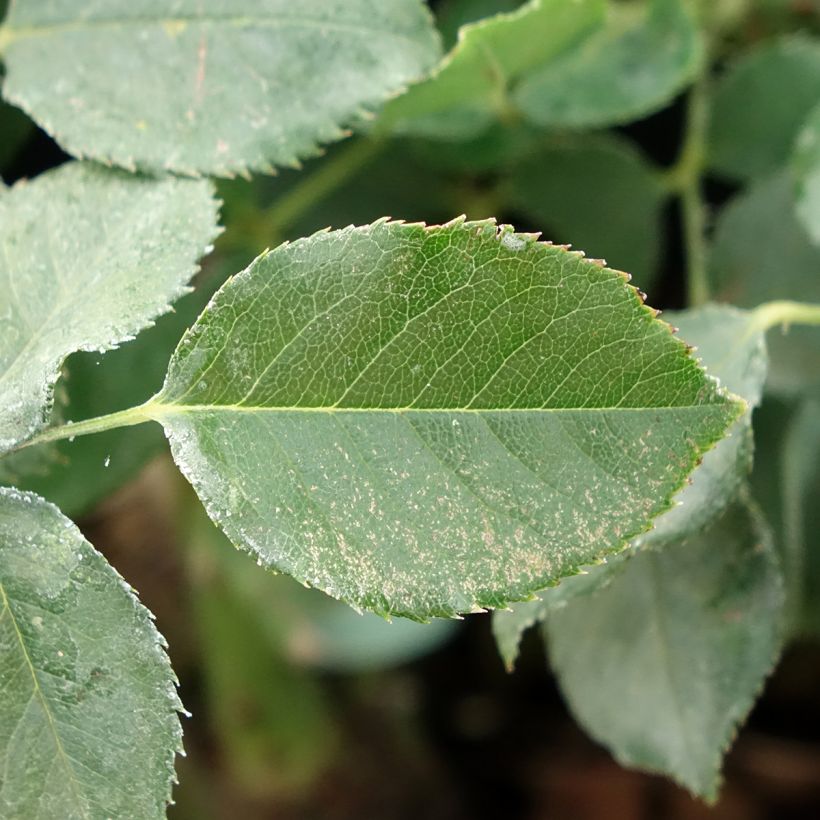

Plant habit
Flowering
Foliage
Botanical data
Rosa
Dame de Coeur
Rosaceae
Cultivar or hybrid
Rosa canina Laxa (4L/5L pot, Wrapped bare root)
Planting and care
To plant your potted rose, work the soil to a depth of 25 cubic cm, crumble the soil well, and place a base amendment, such as dried blood or dehydrated horn at the bottom of the planting hole. Position your plant once removed from its pot. Then, cover the top of the root ball with 3 cm (1in) of soil, fill in, and water generously to remove any air pockets. In dry weather, it is necessary to water regularly for a few weeks to facilitate root growth. Also, remember to provide your rose with special rose fertilizer that stimulates flowering.
Roses are often stained or unsightly at the end of summer, but this is not a problem for their development. These stains are not harmful to the rose; it is a natural phenomenon.
Planting period
Intended location
Care
Planting & care advice
-
, onOrder confirmed
Reply from on Promesse de fleurs
Haven't found what you were looking for?
Hardiness is the lowest winter temperature a plant can endure without suffering serious damage or even dying. However, hardiness is affected by location (a sheltered area, such as a patio), protection (winter cover) and soil type (hardiness is improved by well-drained soil).

Photo Sharing Terms & Conditions
In order to encourage gardeners to interact and share their experiences, Promesse de fleurs offers various media enabling content to be uploaded onto its Site - in particular via the ‘Photo sharing’ module.
The User agrees to refrain from:
- Posting any content that is illegal, prejudicial, insulting, racist, inciteful to hatred, revisionist, contrary to public decency, that infringes on privacy or on the privacy rights of third parties, in particular the publicity rights of persons and goods, intellectual property rights, or the right to privacy.
- Submitting content on behalf of a third party;
- Impersonate the identity of a third party and/or publish any personal information about a third party;
In general, the User undertakes to refrain from any unethical behaviour.
All Content (in particular text, comments, files, images, photos, videos, creative works, etc.), which may be subject to property or intellectual property rights, image or other private rights, shall remain the property of the User, subject to the limited rights granted by the terms of the licence granted by Promesse de fleurs as stated below. Users are at liberty to publish or not to publish such Content on the Site, notably via the ‘Photo Sharing’ facility, and accept that this Content shall be made public and freely accessible, notably on the Internet.
Users further acknowledge, undertake to have ,and guarantee that they hold all necessary rights and permissions to publish such material on the Site, in particular with regard to the legislation in force pertaining to any privacy, property, intellectual property, image, or contractual rights, or rights of any other nature. By publishing such Content on the Site, Users acknowledge accepting full liability as publishers of the Content within the meaning of the law, and grant Promesse de fleurs, free of charge, an inclusive, worldwide licence for the said Content for the entire duration of its publication, including all reproduction, representation, up/downloading, displaying, performing, transmission, and storage rights.
Users also grant permission for their name to be linked to the Content and accept that this link may not always be made available.
By engaging in posting material, Users consent to their Content becoming automatically accessible on the Internet, in particular on other sites and/or blogs and/or web pages of the Promesse de fleurs site, including in particular social pages and the Promesse de fleurs catalogue.
Users may secure the removal of entrusted content free of charge by issuing a simple request via our contact form.
The flowering period indicated on our website applies to countries and regions located in USDA zone 8 (France, the United Kingdom, Ireland, the Netherlands, etc.)
It will vary according to where you live:
- In zones 9 to 10 (Italy, Spain, Greece, etc.), flowering will occur about 2 to 4 weeks earlier.
- In zones 6 to 7 (Germany, Poland, Slovenia, and lower mountainous regions), flowering will be delayed by 2 to 3 weeks.
- In zone 5 (Central Europe, Scandinavia), blooming will be delayed by 3 to 5 weeks.
In temperate climates, pruning of spring-flowering shrubs (forsythia, spireas, etc.) should be done just after flowering.
Pruning of summer-flowering shrubs (Indian Lilac, Perovskia, etc.) can be done in winter or spring.
In cold regions as well as with frost-sensitive plants, avoid pruning too early when severe frosts may still occur.
The planting period indicated on our website applies to countries and regions located in USDA zone 8 (France, United Kingdom, Ireland, Netherlands).
It will vary according to where you live:
- In Mediterranean zones (Marseille, Madrid, Milan, etc.), autumn and winter are the best planting periods.
- In continental zones (Strasbourg, Munich, Vienna, etc.), delay planting by 2 to 3 weeks in spring and bring it forward by 2 to 4 weeks in autumn.
- In mountainous regions (the Alps, Pyrenees, Carpathians, etc.), it is best to plant in late spring (May-June) or late summer (August-September).
The harvesting period indicated on our website applies to countries and regions in USDA zone 8 (France, England, Ireland, the Netherlands).
In colder areas (Scandinavia, Poland, Austria...) fruit and vegetable harvests are likely to be delayed by 3-4 weeks.
In warmer areas (Italy, Spain, Greece, etc.), harvesting will probably take place earlier, depending on weather conditions.
The sowing periods indicated on our website apply to countries and regions within USDA Zone 8 (France, UK, Ireland, Netherlands).
In colder areas (Scandinavia, Poland, Austria...), delay any outdoor sowing by 3-4 weeks, or sow under glass.
In warmer climes (Italy, Spain, Greece, etc.), bring outdoor sowing forward by a few weeks.






































